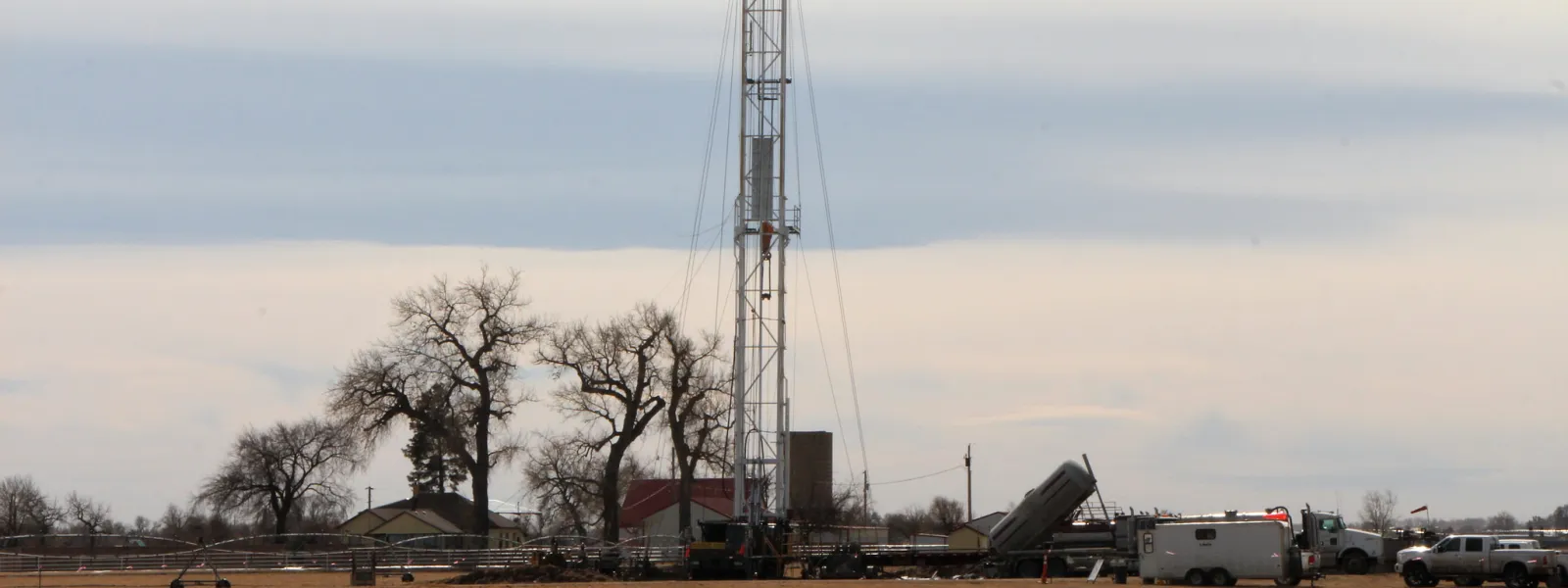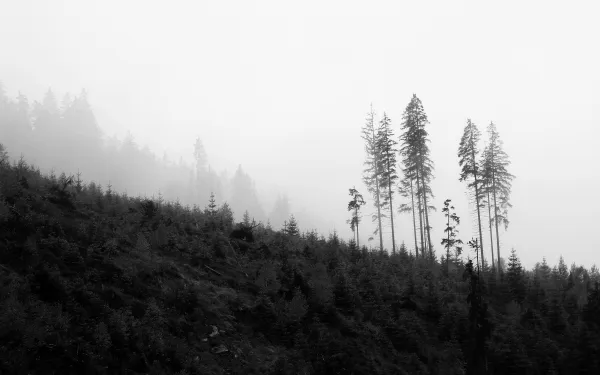
Project
Foto: Andrés ÁngelStopping the spread of fracking in Latin America
“Fracking” is short for hydraulic fracturing, a process used to extract oil and natural gas from historically inaccessible reservoirs.
Fracking is already widespread in the global North, but in Latin America, it is just beginning. Governments are opening their doors to fracking without understanding its impacts and risks, and without consulting affected communities. Many communities are organizing to prevent or stop the impacts of fracking, which affect their fundamental human rights. But in many cases they require legal and technical support.
What exactly is fracking, and what are its impacts?
A straight hole is drilled deep into the earth. Then the drill curves and bores horizontally, making an L-shaped hole. Fracking fluid—a mixture of water, chemicals, and sand—is pumped into the hole at high pressure, fracturing layers of shale rock above and below the hole. Gas or oil trapped in the rock rises to the surface along with the fracking fluid.
The chemical soup—now also contaminated with heavy metals and even radioactive elements from underground—is frequently dumped into unlined ponds. It may seep into aquifers and overflow into streams, poisoning water sources for people, agriculture, and livestock. Gas may also seep from fractured rock or from the well into aquifers; as a result, water flowing from household taps can be lit on fire. Other documented harms include exhausted freshwater supplies (for all that fracking fluid), air pollution from drill and pump rigs, large methane emissions that aggravate global warming, earthquakes, and health harms including cancer and birth defects.
AIDA’s report on fracking (available in Spanish) analyzes the viability of applying the precautionary principle as an institutional tool to prevent, avoid or stop hydraulic fracturing operations in Latin America.
Partners:

Related projects
Our fight to protect the coral reefs and mangroves of Mexico goes beyond national borders
Coral reefs, the nurseries of the seas, are vital to the fisheries that provide food for millions of people. Mangrove forests also benefit people: they protect coastal communities from increasingly severe storm surges and help to mitigate climate change by absorbing huge amounts of carbon dioxide. But large infrastructure projects that ignore these benefits threaten some of these vitally important ecosystems. AIDA uses the law to protect coral reefs, mangroves and other wetlands. We have found that it’s not enough to fight at the local level, country by country. AIDA approaches defense at the ecosystem level, which is more effective. We engage in discussions with international authorities, bringing attention to the obligations that countries have to the world to preserve their marine and coastal environments. "What you get with these international legal actions is a strategy that weaves together various aspects of the case: legal, political, scientific and media. So we make the issue relevant not only to local decision makers, but also to international authorities. Public support is generated and consulting or certified experts speak out about it, "said Sandra Moguel, AIDA legal advisor. A prime example of this strategy for environmental protection is a case involving Mexico, a country rich in wetlands. In May AIDA alerted the Secretariat of the Ramsar Convention, an intergovernmental treaty for the protection of wetlands, about the possible breach of Mexico’s international obligations. Mexico’s government is considering approval of the proposed Las Cruces Dam, a hydroelectric project in Nayarit, a state in the country’s northwest. Among other damage, the project would alter the course of the San Pedro Mezquital River, which feeds Marismas Nacionales (National Wetlands), one of the most extensive mangrove systems in North America. National Wetlands are listed as wetlands of international importance under the Ramsar Convention. In 2010, diplomats from the Ramsar Convention recommended that the Mexican government advocate sustainable use of the wetland while assessing the project’s feasibility. We have alerted the Ramsar Secretariat that their recommendations would be ignored if Mexico gives a green light to a project that would irreversibly damage National Wetlands, biodiversity, and the communities that depend on that environment. By drawing the attention of international bodies, AIDA strengthens the efforts of our local partner organizations. AIDA has also employed this strategy to protect the unique Cabo Pulmo coral reef, in Baja California Sur. Since 2012, we have continually reminded the Mexican authorities that both the Ramsar Secretariat and the Unesco World Heritage Committee have asked them to consider the cumulative and indirect impacts of tourism projects proposed near the reef. Our arguments were added to those presented by our partners in Mexico to prevent authorization of Cabo Dorado, a mega-resort that would involve building a new city near the reef. This project is the third that tourism developers have attempted to build next to Cabo Pulmo. Construction would surely be fatal to the reef. In a victory that extends beyond Mexican borders, the government decided on May 29 to deny the environmental permit for Cabo Dorado. With your help, we will continue to bring the voice of local communities to international forums. We will continue to add value and support their struggle to preserve marine and coastal environments that benefit us all. Thanks!
Read moreAstrid Puentes Lectures at American University
The link between protection of the environment and human rights isn’t always immediately obvious. In fact, international law didn’t begin to establish the human right to a healthy environment until the 1990s. But these are some of the things that can happen when the natural environment is harmed: We can lose our source of food. Our health can suffer. We may lose access to clean water. Our livelihoods can be destroyed if the land we farm or the sea we fish no longer supports a harvest. If a dam floods a village, people lose their homes. In some cases, these losses lead to the loss of a way of life—a culture. International law is clear: the right to food, water, work, home, personal safety, and culture are all protected human rights. That’s why AIDA uses international law to protect the human right to a healthy environment. The relationship between human rights and the environment is gaining wider understanding in the national and international environmental and legal communities. Indeed, American University’s Washington College of Law, in Washington D.C., invited AIDA Co-Executive Director Astrid Puentes Riaño to share her expertise on the subject in June. She gave a weeklong seminar on human rights and the environment in Latin America, available for students attending the summer program. Astrid also spoke on a panel, organized by the Academy of Human Rights of American University and AIDA, about how the two are linked in the specific case of the Belo Monte Dam. Belo Monte is a large hydropower dam under construction in Brazil. The dam will destroy rainforest, kill off plant and animal species, and increase the emission of greenhouse gases, worsening climate change. The human impact is dire. More than 20,000 people will be displaced (independent estimates double this number). Already communities are being stripped of their villages, their cultures, and the cemeteries of their ancestors to make way for the world’s third-largest hydropower dam. Many river dwellers have moved to cities where they find themselves alone and struggling to find new trades. “Our work is a constant David and Goliath battle. Sharing experiences with expert colleagues from the environment and human rights departments at one of the most prominent universities in the US was an honor” said Astrid Puentes Riaño, AIDA’s co-executive director. “It gives us hope that academia is recognizing this link, and is willing to study it. We look forward to continuing this kind of exchange, and to helping train more young lawyers about these issues.”
Read more
Joint letter: Mexico – Detention of environmental and human rights defender Mr. Marco Antonio Suástegui Muñoz
The 57 organizations and persons signatory to the letter, which work for the protection of human rights and the environment, express their deep concern at the detention of Mr. Marco Antonio Suástegui, leader of the Consejo de Ejidos y Comunidades Opositores a la Presa La Parota – CECOP (Council of Communal Lands and Communities Opposing the La Parota Dam), on 17 June by members of the Ministerial Police of the Attorney General of Justice of Guerrero State. We call upon the Mexican State to take effective and urgent measures to guarantee the human rights of Mr. Suástegui and the important work that the human rights defender performs in defence of the Papagayo River. In particular, we consider it fundamental that the State: Take measures to ensure that the competent authorities guarantee the right to a defence and due process of Mr. Marco Antonio Suástegui, and reverse any action taken in the detention procedure and past transfers that tainted by illegalities, Take measures to guarantee his physical and psychological integrity, and Take all necessary measures to secure the work for the defence of human rights and the environment undertaken by Marco Antonio Suástegui, and take an active role in avoiding any act that hinders the actions taken to defend the Papagayo River.
Read more